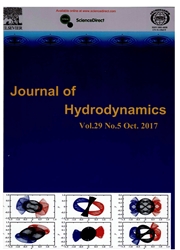

 中文摘要:
中文摘要:
纸介绍一个词法模型和它的申请的发展给试验性的模型河。模型考虑隧道移植的关键进程,包括床变丑,河岸失败并且弄湿并且弄干。在拐弯的第二等的流动在侧面的沉积运输起一个重要作用,它进一步影响隧道移植。一个新公式被导出预言近床的第二等的流动速度,速度的大小在被连接到侧面的水水平坡度。因为仅仅非连贯的沉积在当前的学习被考虑,河岸失败基于休息的沉没角度的概念被建模。弄湿并且弄干的过程用一个存在方法被建模。在为各种各样的分泌物的数字模型预言和试验性的观察之间的比较被做了。模型预言隧道平面形状和代表性的形状与实验室观察通常同意很好,这被发现。情形分析也被执行在隧道迁居过程上调查第二等的流动的影响。它证明如果第二等的流动的效果被忽略,在侧面的方向的隧道尺寸将严重被低估。
 英文摘要:
英文摘要:
The paper presents the development of a morphological model and its application to experimental model rivers.The model takes into account the key processes of channel migration,including bed deformation,bank failure and wetting and drying.Secondary flows in bends play an important role in lateral sediment transport,which further affects channel migration.A new formula has been derived to predict the near-bed secondary flow speed,in which the magnitude of the speed is linked to the lateral water level gradient.Since only non-cohesive sediment is considered in the current study,the bank failure is modelled based on the concept of submerged angle of repose.The wetting and drying process is modelled using an existing method.Comparisons between the numerical model predictions and experimental observations for various discharges have been made.It is found that the model predicted channel planform and cross-sectional shapes agree generally well with the laboratory observations.A scenario analysis is also carried out to investigate the impact of secondary flow on the channel migration process.It shows that if the effect of secondary flow is ignored,the channel size in the lateral direction will be seriously underestimated.
 同期刊论文项目
同期刊论文项目
 同项目期刊论文
同项目期刊论文
 期刊信息
期刊信息
